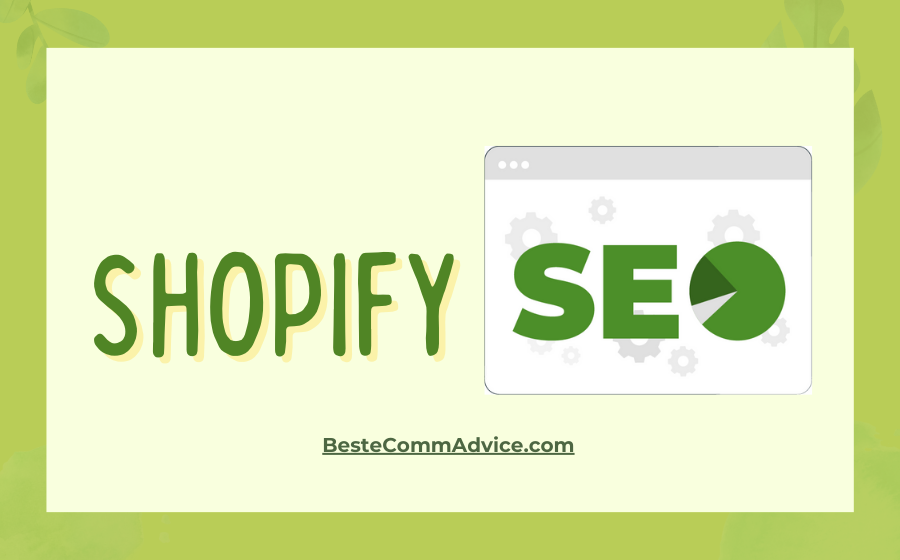Mastering Shopify SEO: A Comprehensive Guide to Boost Your Online Store’s Visibility
Introduction
In the ever-expanding realm of e-commerce, having a visually appealing online store is only half the battle. Without effective search engine optimization (SEO), your Shopify store might struggle to attract the right audience and convert visitors into customers. Shopify, one of the leading e-commerce platforms, offers a range of features and tools to optimize your store for search engines. In this guide, we’ll delve into the intricacies of Shopify SEO and provide actionable strategies to enhance your store’s visibility, drive organic traffic, and ultimately increase sales.
Understanding Shopify SEO
SEO for Shopify revolves around optimizing various elements of your online store to improve its ranking on search engine results pages (SERPs). By enhancing your store’s visibility, you increase the likelihood of attracting relevant traffic from search engines like Google, Bing, and Yahoo. Shopify offers built-in SEO features and functionalities, making it relatively easy for merchants to implement optimization strategies without extensive technical knowledge.
Key Components of Shopify SEO
Keyword Research
Start by identifying relevant keywords and phrases that your target audience is likely to use when searching for products or services similar to yours. Utilize keyword research tools like Google Keyword Planner, SEMrush, or Ubersuggest to discover high-volume and low-competition keywords. Focus on long-tail keywords that are more specific and have lower competition, as they can drive targeted traffic to your store.
On-Page Optimization
Optimize product pages, collection pages, and blog posts with relevant keywords in titles, headings, meta descriptions, and URL slugs. Write compelling and descriptive product descriptions that incorporate keywords naturally while providing valuable information to potential customers. Use high-quality images with descriptive alt text to improve accessibility and provide search engines with context about your products. Ensure fast page load times by optimizing images, using a responsive theme, and minimizing unnecessary code.
Technical SEO
Customize your Shopify store’s URL structure to be clean, concise, and keyword-rich. Implement canonical tags to avoid duplicate content issues, especially for products that appear in multiple collections. Optimize your robots.txt file and XML sitemap to guide search engine crawlers through your site efficiently. Enable SSL encryption to secure your site and improve its trustworthiness in the eyes of both visitors and search engines.
Mobile Optimization
Given the increasing prevalence of mobile shopping, ensure that your Shopify store is fully optimized for mobile devices. Choose a responsive theme that adjusts seamlessly to different screen sizes and resolutions. Test your store’s mobile-friendliness using tools like Google’s Mobile-Friendly Test and make necessary adjustments to improve user experience.
Content Marketing
Create high-quality, engaging content such as blog posts, guides, tutorials, and videos related to your products or industry. Incorporate relevant keywords naturally into your content to attract organic traffic and establish your store as an authority in your niche. Encourage social sharing and engagement to amplify the reach of your content and attract backlinks from authoritative websites.
Link Building
Focus on acquiring high-quality backlinks from reputable websites within your industry or niche. Reach out to bloggers, influencers, and industry publications to request guest blogging opportunities or product reviews. Participate in online communities, forums, and social media groups to establish connections and promote your Shopify store organically.
User Experience (UX) Optimization
Prioritize user experience by ensuring easy navigation, intuitive design, and clear calls-to-action throughout your Shopify store. Optimize product pages for conversions by providing detailed product information, clear pricing, and prominent add-to-cart buttons. Implement customer reviews and ratings to build trust and credibility, as well as to provide valuable user-generated content for SEO purposes.
Monitoring and Analytics
Use Shopify’s built-in analytics tools or integrate third-party analytics platforms like Google Analytics to track key metrics such as traffic, conversions, and revenue. Monitor keyword rankings, inbound links, and other SEO performance indicators regularly to identify areas for improvement and optimization. Continuously iterate and refine your SEO strategies based on data-driven insights and industry best practices.
Additional Tips For Enhancing Shopify SEO
Enhance Local SEO
If your Shopify store serves local clients, you should make sure that your website is geared for local search engine optimization (SEO). This means ensuring that your firm is listed with the proper contact information in important local business directories. Make sure your meta tags, titles, and content all contain local keywords. Customers’ reviews of your business should also be taken into account because they could affect how highly ranked your firm is in local search results. Lastly, make sure you’re employing other local SEO tactics, such as using structured data standards and optimizing images and videos for local search, to further raise your local ranks.
Ensure Site Security
Because search engine crawlers can determine if a website provides its visitors with a safe browsing environment, a secure website is also essential for Shopify SEO. You should use SSL certificates to protect client data since HTTPS encryption contributes to the security of sensitive data and accounts. Additionally, consider using automated technology to regularly scan your website in order to stay informed about potential hazards.
Generate Quality Content
Making excellent content is one of the best ways to improve your Shopify SEO. Writing compelling content is just one part of creating high-quality content; you also need to highlight the benefits of your products and services and include information that a prospective customer would not find elsewhere. High-quality visuals can be utilized to improve SEO and engagement as well as to provide an interesting experience through pictures, videos, and infographics. Furthermore, adding relevant keyword phrases and themes related to your Shopify SEO sparingly and naturally may help increase organic traffic.
Improve Page Load Speed
Because search engines favor websites that load quickly over those that take longer, page loading speed is essential for improving Shopify SEO. Search engines will give your website more weight and rank it higher in the SERP if users remain on it longer. People can go through your website more quickly if it loads more quickly. To optimize website loading speed, make sure that all scripts are minified, all images and videos are compressed, the size of the HTML text is reduced, and caching is enabled. Take a look at features like lazy loading images, which load content only when visitors reach particular pages on the website.
Leverage Social Media Platforms
Using social media platforms to advertise your Shopify business and acquire followers is a great idea. It can help you get more backlinks from high-quality websites and increase website engagement. Recall that building backlinks is important for Shopify SEO, but so is building interaction. Consequently, make sure to engage with your clients—both past and present—on all of the major social media networks, such as YouTube, Facebook, Instagram, Twitter, LinkedIn, and Facebook. Remember to include the relevant Social Meta Tags on your website for more engagement.
Maximize Multi-Channel Marketing
By using multi-channel marketing techniques, you can actually optimize every facet of your Shopify SEO efforts. Multi-channel marketing refers to the use of multiple marketing channels at once, such as social media platforms, digital marketing channels, and traditional media channels. You may, for example, combine search engine marketing, email marketing, paid ad campaigns, and content marketing to create holistic marketing strategies that successfully reach your target demographic.
Nurture Customer Reviews
Testimonials from satisfied customers are a terrific approach to boost traffic to your Shopify website and the effectiveness of your SEO efforts. Encourage clients to post reviews on review platforms such as Google and Yelp to gain quick authority and credibility with prospective clients. Interacting with your target audience and answering their reviews on these platforms is another method to gain their confidence and trust. Hence, be sure to value and capitalize on client feedback.
Utilize Shopify Apps & Plugins
Shopify offers a wide range of applications and plugins that you may use to enhance your website’s search engine optimization. They can help with improving page load speed, which is beneficial for SEO, in addition to offering tools to track website visits and user interaction metrics. A variety of Shopify plugins, such as those for sitemaps, hreflang tags, and meta tags, can also help you improve your website’s technical SEO. You should utilize these plugins in addition to ongoing SEO efforts to stay on top of the game when it comes to optimizing the visibility and functionality of your website in search engines.
Conclusion
Effective SEO is essential for the success of your Shopify store in today’s competitive e-commerce landscape. By implementing the strategies outlined in this guide, you can improve your store’s visibility, attract organic traffic, and ultimately drive more sales. Remember that SEO is an ongoing process that requires consistent effort and adaptation to algorithm updates and evolving consumer behaviors.
By staying informed, staying proactive, and staying committed to optimizing your Shopify store for search engines, you can position your business for long-term growth and success in the digital marketplace.





